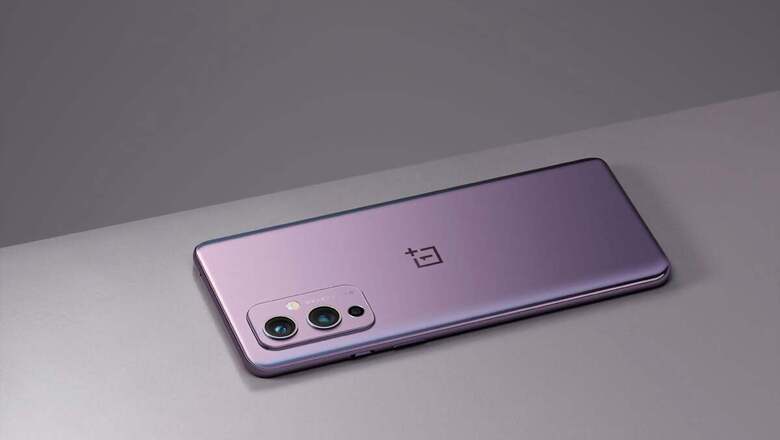
views
When it was announced, 5G seemed like the next big revolution in smartphone tech. 5G promised gigabit download speeds where we could download entire movies in seconds, access and edit files in the cloud faster than you could from your PC or phone’s own internal storage, zero-latency gaming, and more.
The reality, however, has seemed slow in arriving. Few countries have 5G bands deployed, and where 5G is available, speeds are not dramatically faster than good 4G speeds. Worse still, you could probably count on one hand the number of locations where the promise of gigabit speeds is realised, a lot of that varying due to network conditions, and that’s assuming you even have a smartphone that can connect to the network to begin with.
Is 5G just a scam?
No, but the hype did overshadow reality. 5G can deliver exactly what was promised, but only in ideal circumstances, and with very limited range.
Before we understand what 5G is, however, we need to understand how smartphones communicate with each other.
Understanding frequency bands
Depending on where you live, cellular phones currently connect to networks at various predetermined radio frequencies ranging from 600 MHz to about 2,700 MHz. As a rule of thumb, the lower the frequency, the greater the range and penetrative power of the network. On the other hand, the greater the frequency, the smaller the range and the higher its bandwidth. The net result is that indoor coverage for 5G will greatly vary depending on the band in use, something that’ll impact us as we use phones indoors in homes and office buildings.
If you think of these bands as sound waves, bandwidth makes a lot more sense. Low bass frequencies travel very far, but higher vocal frequencies, for example, do not. You can hear the thump of a helicopter’s massive rotors from kilometres away, but you can’t hear the whine of its gas turbine unless you’re feet away.
Coming back to radio frequencies, these bands are further split into smaller groups. 2G networks operate at 900 MHz and 1800 MHz, labelled B8 and B3 respectively. 3G operates in 800 MHz (B8) and 2,100 MHz (B1). 4G operates in multiple bands – B1, B3, B5, B8. B40, B41 – which range in frequency from 850 MHz to 2,100 MHz.
The primary reason cellular networks are forced to operate in a limited frequency range is govt. and military allocation. Military equipment such as radios, and even civilian equipment like satellites, etc. usually communicate securely in higher and lower frequencies. Allowing billions of cell phones to operate in those same bands will cause interference and disrupt critical communications.
With the right hardware, 5G can operate at anything from 600 MHz all the way to 52,000 MHz and beyond.
2G vs 3G vs 4G vs 5G
Without getting too technical, each ‘G’ or generation of cellular technology simply determines the efficiency with which a cellular band is used. The physical properties of a 600 MHz band (range, bandwidth, etc.) remain unchanged, but a more efficient 5G network operating at 600 MHz will support more devices and offer greater speeds than a 2G, 3G or 4G network.
Take the current 4G situation in India. When it first rolled out, we were promised speeds of up to 300 Mbps. Today, with one of the largest 4G networks in the world, congestion and bandwidth limitations mean that average speeds hover between the 10-15 Mbps range. 4G is already saturated.
If, as is happening the world over, 5G simply takes over from 4G, by operating in the same frequency bands as 4G, we’re guaranteed a slightly faster, but much more stable network. That in itself is a big win.
So we’re not getting 1 Gbps speeds and zero-latency gaming?
Yes, and no. To get such speeds, you need a 5G network operating at 30,000 MHz and beyond (called mmWave). At such frequencies, you’re looking at a cell signal that will give you 1 Gbps download speeds, but also one that’s weak enough to be blocked by a sheet of glass or the leaves of a tree. You’ll need to be close to the tower and have a clear line of sight to the antennae. This is simply not practical to implement at scale yet.
More importantly, these frequencies need to be allocated for use by cellular network operators. In many countries, including India, this means talking to TRAI and COAI, and even the military and organisations like ISRO to determine if, and which, relevant mmWave frequency bands can be freed up, setting up regulations and guidelines for deployment of such networks, discussions on restrictions, spectrum auctions, etc.
Given these limitations, in most countries, including India, 5G is practically limited to bands below 6 GHz aka sub-6. The exact bands are yet to be finalised, but we do know that they will be, in the near future, limited to sub-6.
For all these reasons and more, most smartphone makers, including OnePlus, only support sub-6 5G bands.
Why phones like the OnePlus 9 only support 3.5 GHz 5G in India
As we’ve already explained, mmWave hasn’t even been allocated for use by telecom operators in India. 5G trials only started a few weeks ago, and those trials are limited to sub-6 bands. In fact, European and Asian countries are only expected to allocate the n78 band – 3.2 GHz to 3.67 GHz – for 5G use. Permission to use mmWave for 5G should arrive at some point, but it will likely be several years before we see it.
Clearly, there’s no point in manufacturers like OnePlus supporting faster 5G bands like mmWave, support that will only add to the cost of the phone while offering users like us no tangible benefits.
The writer is an independent Journalist.
Read all the Latest News, Breaking News and Coronavirus News here.


















Comments
0 comment